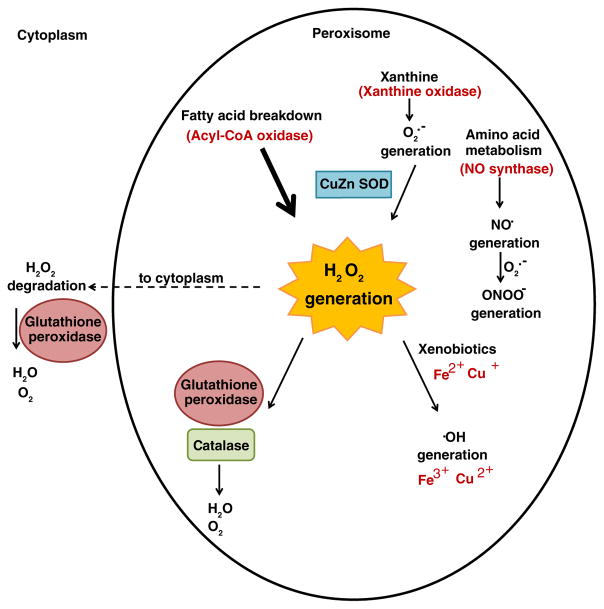Fig. 1.
Sources of superoxide, hydrogen peroxide, nitric oxide radical, peroxynitrite, and hydroxyl radical production in the peroxisome. Hydrogen peroxide (H2O2) is the main metabolic by-product of fatty acid metabolism in peroxisomes. The primary oxidase to carry out the direct generation of H2O2 is acyl CoA oxidase (Foerster et al., 1981). In addition, superoxide (O2• −), a by-product of the breakdown of xanthine, is scavenged by copper-zinc superoxide dismutase (CuZn SOD) and converted into H2O2 and O2 (Foerster et al., 1981). The majority of H2O2 produced in the peroxisome is degraded by catalase and glutathione peroxidase. The remainder may undergo Fenton chemistry, resulting in the formation of the hydroxyl radical (•OH). In addition, a portion of H2O2 is leaked into the cytoplasm, where it is reduced by glutathione peroxidase (Halliwell & Gutteridge, 1989). Breakdown of amino acids may generate the nitric oxide radical (NO•) which reacts rapidly with O2• − to generate peroxynitrite (ONOO−).

